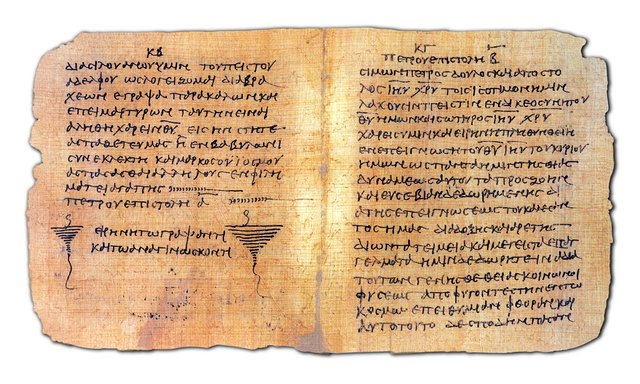The history of ancient libraries in and around the area of the current Republic of Turkey #2
Papyrus scrolls
What did these books look like? They were scrolls of papyrus, the pith of the papyrus, which grew in the marshes of Egypt, especially in the Nile delta, and had been used by the Egyptians as writing material from earliest times. From the stems along with their soft marrow they cut narrow thin strips lengthwise and put them together so that they overlapped a little. A second layer was placed over and both were tapped and pressed until they had become a continuous thin sheet. As an adhesive, the juice of the pest was sufficient. The papyrus leaf was dried and smoothed in the sun. For shorter texts, such as documents, invoices or letters, one used single sheets, for longer one glued several single sheets together into a roll.
Byblos - the book and the alphabet
This role was called Greek bíblion, hence our word bible, the "book of books". Biblion went back to the Phoenician city of Byblos, near today's Beirut, the main hub for the coming of Egypt papyrus, which was sold there in large bales. The Egyptians already wrote around 3000 BC. On papyrus, for example their famous death books, and the Phoenicians protested of their trade relations with Egypt. Not only did they import the papyrus, but they also created a very useful alphabet that the Greeks, the trading partners of the Phoenicians, then adopted. They further developed it by inserting vowels into the Phoenician consonantation. In contrast to the ancient Near Eastern scriptures, this Greek script was not limited to an elite or a caste of caste but was used by the whole people: a prerequisite for the cultural upswing of Greece. The well-known Dipylonkanne, a wine jug with a scratched alphabet font around 740 v. Chr. Chr. - the inscription for the victory at a dance in Athens.
Spreading of reading and writing in the time of Homer
The papyrus scroll of the Greeks and Romans was generally six to ten feet long, the width was 25 to 30 centimeters. To protect against bookworms, the papyrus was rubbed with cedar oil, the cut surfaces of the roll were polished and dyed to prevent fraying of the edge. It was written in black or red ink made from soot or ocher with water and a gum solution. A rush or cane stem, the kálamos, with different fine tips, served as a writing tool.

